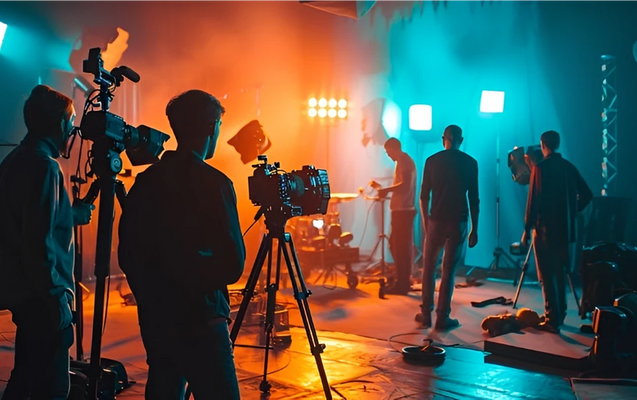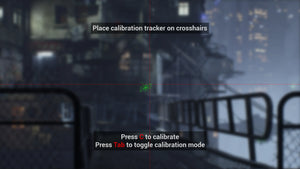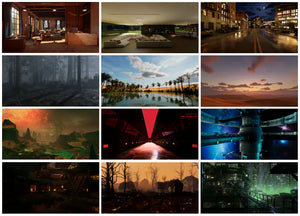Special Effects in Movies: History, Types & Famous Examples

When you watch a blockbuster, the explosions, monsters, and magical worlds often feel larger than life. But have you ever wondered how filmmakers create these jaw-dropping visuals? The answer lies in special effects in movies. From practical tricks used in early Hollywood films to today’s sophisticated digital effects, special effects have transformed how stories are told on screen.
In this blog, we’ll break down what are special effects in movies, their history, the different types of special effects, and provide real special effects examples from Hollywood. We’ll also explore the difference between special effects vs visual effects, and even touch on special effects apps you can try yourself.
What Are Special Effects in Movies?
Special effects (often called SFX) are techniques used in filmmaking to create illusions or scenarios that can’t be achieved naturally. This can include explosions, makeup effects, animatronics, or environmental simulations like storms.
Unlike visual effects (VFX), which are created digitally on computers, special effects often involve practical or physical methods used on set. For instance:
-
A car crash staged with real vehicles and controlled pyrotechnics is a special effect.
-
Adding a digital city skyline in post-production is a visual effect.
Who Invented Special Effects in Movies?
The origin of special effects in cinema goes back to the late 19th century. The pioneer was Georges Méliès, a French filmmaker often called the father of special effects. In 1896, Méliès accidentally discovered a stop-camera trick while filming. This led him to create cinematic illusions such as disappearing characters, multiplying objects, and fantastical worlds.
His 1902 film A Trip to the Moon is one of the earliest special effects in movie examples, showcasing practical magic, miniatures, and creative camera tricks.

Types of Special Effects in Movies
Filmmakers use a variety of types of special effects depending on the story. Let’s explore the most common categories:
1. Mechanical Effects
Also called practical effects, these involve physical mechanisms or props used during shooting. Examples include:
-
Moving set pieces (collapsing walls, trapdoors)
-
Controlled car crashes
-
Animatronics like dinosaurs in Jurassic Park
2. Pyrotechnic Effects
Explosions, gunfire, sparks, and fire are part of this category. Hollywood action films rely heavily on pyrotechnics to heighten realism.
3. Makeup & Prosthetics
Transforming actors into creatures, monsters, or even aging them requires special effects makeup. Classic examples include:
-
The werewolf transformation in An American Werewolf in London
-
Voldemort’s noseless face in Harry Potter
4. Atmospheric Effects
These simulate environmental conditions on set:
-
Artificial rain or snow
-
Smoke and fog machines
-
Wind machines
5. Miniatures & Models
Before CGI, filmmakers used detailed models for large-scale illusions, like spaceships in Star Wars. Even today, directors like Christopher Nolan prefer miniatures for authenticity.
Special Effects in Movies: Hollywood Examples
Hollywood has been at the forefront of innovation in this field. Let’s look at some iconic special effects in movies Hollywood has produced:
-
Terminator 2: Judgment Day (1991): Combined makeup prosthetics with digital effects for the T-1000 character.
-
The Lord of the Rings Trilogy: Used massive miniatures (“big-atures”), prosthetics, and CGI to create Middle-earth.
-
Inception (2010): Christopher Nolan used rotating sets and practical stunts to simulate zero-gravity fight sequences.
-
Mad Max: Fury Road (2015): Relied heavily on practical stunts, pyrotechnics, and atmospheric effects instead of pure CGI.
These special effects in movies examples prove how the right mix of techniques can bring unforgettable visuals to the screen.
Special Effects vs Visual Effects
It’s easy to confuse these two, but they’re not the same:
-
Special Effects (SFX): Practical, physical, and created during production. Examples: explosions, prosthetics, animatronics.
-
Visual Effects (VFX): Digital, created in post-production. Examples: CGI creatures, green-screen environments.
Both are essential to modern filmmaking, and directors often use them together for seamless storytelling.
The Future of Special Effects in Movies
Emerging Technology and Modern Tools
The world of special effects in movies has evolved dramatically from Georges Méliès’ early experiments. Today, filmmakers blend traditional practical effects with cutting-edge digital tools to create immersive experiences. What’s fascinating is that even in a digital-first era, directors still rely on types of special effects such as prosthetics, explosions, and atmospheric conditions to maintain realism.
Another innovation is the rise of special effects apps. While these tools are not on the scale of Hollywood productions, they allow aspiring filmmakers, content creators, and even hobbyists to experiment with effects like fire, explosions, or filters directly on their smartphones. Apps such as Action Movie FX and FXGuru have introduced millions to the basics of film illusion, making the craft more accessible than ever.
Special Effects in Hollywood Today
Modern Hollywood productions show that special effects in movies Hollywood is not about choosing between practical or digital methods but combining them effectively. Christopher Nolan is known for his reliance on real stunts, explosions, and miniatures, which he enhances later with VFX. Similarly, films like Avengers: Endgame merge motion capture and prosthetic work to create lifelike characters that interact seamlessly with human actors.
The demand for realism has pushed filmmakers to carefully balance special effects vs visual effects. Audiences are quick to notice when a scene feels “too digital.” This is why even billion-dollar franchises often film with real explosions, rain machines, or detailed prosthetics before layering CGI enhancements in post-production.
Why Special Effects Still Matter
Despite the dominance of digital technology, special effects remain essential to filmmaking. They bring a sense of physicality that CGI alone often struggles to achieve. For example, an explosion filmed with real fire has a weight and unpredictability that even the best computer renderings can’t perfectly replicate.
Special effects also make actors’ performances more convincing. Standing on a real set with fire, smoke, and physical props allows them to react authentically, compared to performing against a green screen. This combination of tangible reality and digital creativity explains why audiences continue to marvel at the artistry of both approaches.
Special Effects Examples That Changed Cinema
Throughout history, some films have redefined what special effects can achieve. Stanley Kubrick’s 2001: A Space Odyssey used pioneering model work and camera tricks to depict space travel before humans had even landed on the moon. Steven Spielberg’s Jurassic Park revolutionized cinema by blending animatronic dinosaurs with early CGI, creating creatures so believable that they terrified audiences in 1993 and still hold up today.
More recently, Mad Max: Fury Road demonstrated that large-scale stunts and pyrotechnics could rival even the most advanced CGI-heavy films. The movie’s chase sequences were filmed in real desert locations with custom vehicles and practical explosions, proving the timeless power of special effects in movies examples.
Who Uses Special Effects Beyond Hollywood?
While Hollywood dominates the global film industry, special effects are not limited to it. Bollywood, for example, has increasingly invested in both SFX and VFX to enhance epic storytelling. Japanese cinema, particularly in the kaiju genre (think Godzilla), has a long tradition of using miniatures, pyrotechnics, and elaborate suits as part of their special effects heritage.
Independent filmmakers and streaming platforms are also pushing the boundaries, often blending affordable special effects apps with clever practical tricks to deliver engaging visuals on tighter budgets. This democratization of technology ensures that creativity, not just money, drives innovation in cinema.
Common Misconceptions About Special Effects
A frequent question people ask is, what are special effects in movies? Many believe they are entirely computer-generated, but as we’ve seen, that’s not accurate. Another misconception is that special effects are only used in big-budget films. In reality, even low-budget productions use simple effects like artificial rain, makeup, or miniatures to tell their stories more convincingly.
It’s also often assumed that special effects are outdated compared to digital effects. On the contrary, filmmakers continue to rely on them because they add authenticity and save costs in certain situations. A real pyrotechnic explosion, for instance, may be cheaper and more convincing than rendering one digitally.

FAQs About Special Effects in Movies
1. What are special effects in movies?
Special effects are practical, physical techniques used on set to create illusions or scenarios that can’t be achieved naturally, such as explosions, prosthetic makeup, or environmental simulations.
2. Who invented special effects in movies?
French filmmaker Georges Méliès is credited with inventing cinematic special effects in the late 19th century. His groundbreaking film A Trip to the Moon (1902) remains an iconic example.
3. What are the main types of special effects?
The main categories include mechanical effects, pyrotechnics, prosthetic makeup, atmospheric effects, and miniatures. Each serves a different storytelling purpose.
4. What is the difference between special effects and visual effects?
Special effects (SFX) are created physically on set during production, while visual effects (VFX) are computer-generated and added in post-production.
5. Are there special effects apps I can use at home?
Yes, apps like Action Movie FX, FXGuru, and even TikTok effects offer fun and accessible ways to add explosions, lightning, or cinematic illusions to your own videos.
Conclusion: Why Special Effects Keep Cinema Magical
The history and evolution of special effects in movies remind us that cinema is as much about illusion as it is about storytelling. From Méliès’ early camera tricks to today’s billion-dollar blockbusters, SFX has been at the heart of movie magic.
Whether you’re looking at special effects in movies Hollywood, exploring types of special effects, or testing a special effects app yourself, one thing is clear: these techniques will always play a role in how filmmakers bring the impossible to life.
If you’re passionate about how effects can transform your next project or want expert guidance on storytelling with impact, we’re here to help. Ready to create unforgettable visuals? Contact us today at ARwall to explore how we can bring your vision to life.





